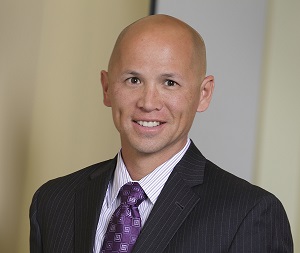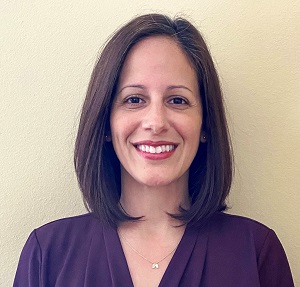Getting workers to exercise post-pandemic will make them healthier, happier
BY RIK LEE AND LOURDY SOTO
The global pandemic literally stopped the world in its tracks in 2020. Many folks who were used to hitting the gym, a Pilates class, or the tennis courts each day, instead hit their couches. Step counts, the gold standard for measuring activity for many health plans and employers, dropped significantly across the globe.
Although some Americans have now bounced back to pre-pandemic fitness goals, a whopping 25% of U.S. adults still are not active enough to protect their health, according to a 2022 report from the CDC. In fact, more than 1 in 5 adults from 46 of 50 U.S. states is considered inactive, meaning they did not participate in any physical activities outside of work, such as walking, running or even gardening.
Such news on the sedentary state of our nation has health plans and employers laser-focused on getting their members moving again. Brokers have an opportunity to help. Here are five reasons to start offering fitness programs today.
1. Fitness programs can help minimize a major pain point for your clients: soaring medical expenses.
Sedentary behaviors take a toll on the human body, increasing cardiovascular disease and metabolic disorders, such as diabetes and hypertension, as well as risks for cancer, and musculoskeletal issues like arthritis and osteoporosis.
There are mental health effects, too, including depression and cognitive impairment. In fact, inadequate levels of physical activity are associated with $117 billion in annual healthcare costs, according to the CDC. It’s no wonder so many health plans are turning to Medicare Advantage plans to provide fitness benefits. Employers, too, are looking to ward off high medical costs by ratcheting up their fitness programs. Enhanced employee fitness not only can help them reduce their medical expenses now, but can provide a positive impact down the road. In a 2021 study of exercise and Medicare claims, researchers found that people who start to exercise before or during middle age typically save anywhere from $824 to $1,874 annually on health care costs after retirement. And the earlier they start their workouts, the greater those savings can be.
If you’re not among the brokers helping health plans — and employer groups — access fitness benefits, you’re missing out on an important and growing market.
2. Fitness programs offer affordable, flexible options that appeal to client populations.
Many older adults who lost ground in their physical health during the pandemic are anxious to kickstart a new health regimen or expand their old one. They just need a little help to get going. Affordability is a key factor for seniors, and Medicare Advantage (MA) programs are a solution. MA fitness programs like the Silver&Fit® Exercise & Healthy Aging program offer no-cost or low-cost access to thousands of name brand national and popular regional gyms, YMCAs, fitness centers and even upscale boutique studios.
For seniors who may be uncomfortable going back to the gym, such programs also offer thousands of streaming online workouts or videos. Similarly, employer group fitness programs offer the same kinds of choices in workout options: thousands of fitness clubs and videos at a low monthly rate. That’s important as Americans face skyrocketing costs of living. The timing is right to offer your employer groups an affordable fitness benefit program to encourage greater fitness participation. Most employer fitness programs can be offered either as a subsidized or unsubsidized benefit.
3. Fitness programs support success through multiple engagement touchpoints.
It’s one thing to provide a fitness and wellbeing program and another to actually engage members to work out in a way that is consistent and meaningful. Brokers should align themselves with programs that offer multiple touchpoints that engage, re-engage, and reward members who work out consistently.
For example, more robust fitness programs will offer:
• digital personal training or telephone coaching support, including goal-based workout plans
• an online library of wellbeing and exercise content
• home fitness kits that contain simple equipment to get a member started, such as yoga mats and blocks, stretch bands, dumbbells, swim gear, and more
• access to discounted fitness trackers and tracking apps
• gift rewards, such as pins or hats
• healthy aging newsletters and blogs
• interactive social media communities
• access to local or regional social clubs and other engaging touchpoints that support the member’s overall wellbeing.
4. Fitness programs help your clients enhance health equity across their member populations.
Lack of access to safe and convenient places to be physically active may contribute to health disparities in your clients’ populations, according to the CDC. Some of your clientele may live in communities with no nearby gyms, no convenient or safe outdoor parks to exercise, and even no walkable sidewalks due to inadequate infrastructure. By providing your clients with a program that includes thousands of home videos, online workouts and fitness kits, in addition to regional gym access, health plans and employers can enable their members to be active in an environment that feels inviting, safe, easy to access and equitable for all.
5. Fitness programs are easy and cost-effective to implement.
The best fitness benefit providers can make implementation easy for you and easy for your clients. Here are some implementation services you should look for:
• a step-by-step program setup
• a range of promotional, educational, and other marketing materials to support the plan introduction and encourage member enrollment and data analytics to help track participation.
Consider what kind of services and customer support you want and need to deliver the highest value to your clients, then align yourself with a fitness benefit provider who can check those boxes for you.
America’s high levels of population inactivity have set off alarm bells for the federal government and the CDC. In response, they are partnering with communities and healthcare organizations nationwide to help foster increased activity levels and ward off escalating health costs. Insurance professionals can play their part by offering flexible and affordable fitness programs to their clients and millions of members and employees.

RIK LEE is a senior vice president of fitness at American Specialty Health Fitness, Inc., whose products include the Silver&Fit® program for Medicare Advantage or Medicare Supplement populations, and Active&Fit®programs for employer groups, associations, and others. Contact: SalesSupportInquiries@ashn.com

LOURDY SOTO is senior manager of growth and engagement strategy at American Specialty Health Fitness, Inc. For broker sales or support information, contact: agentinfo@silverandfit.com.
About American Specialty Health (ASH): ASH provides health plans, employer groups, insurance carriers, and trust funds with a wide range of health management, fitness and exercise, and musculoskeletal provider networks programs to improve the health of their members or employees.

